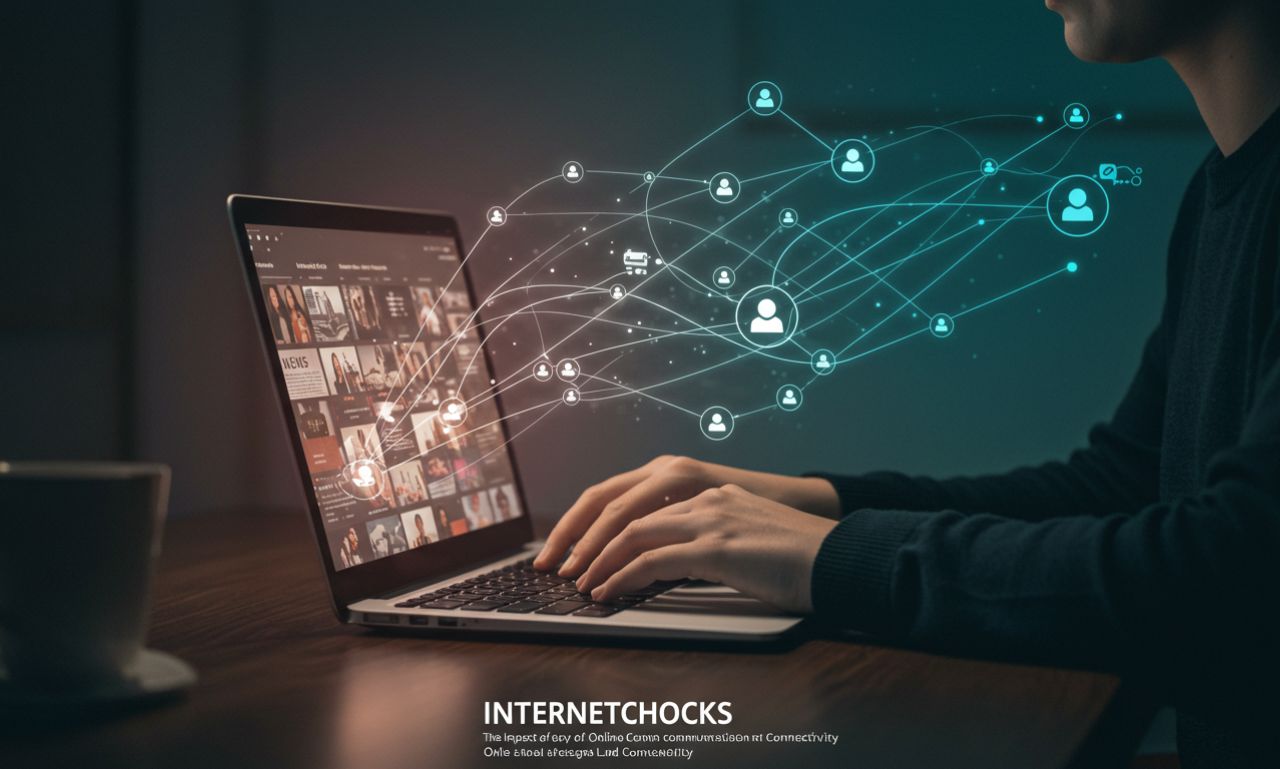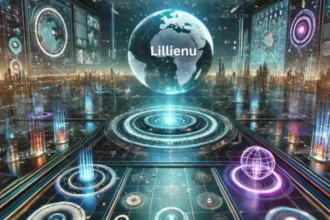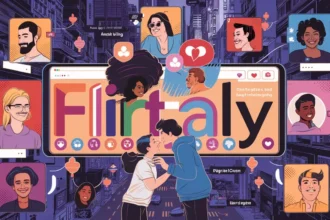Introduction to the internetchocks
In a world where communication happens at the speed of light, the concept of “internetchocks” emerges as both a blessing and a challenge. Picture this: you can connect with someone halfway across the globe in an instant. Video calls, social media updates, and endless messages keep us linked like never before. However, while technology brings us closer together, it also raises questions about how we interact on deeper levels.
As we navigate this digital landscape, understanding internetchocks becomes crucial. What are the benefits? What pitfalls should we be wary of? Join us as we explore the intricate tapestry of online communication and connectivity—where every click has its own significance!
The Benefits of Online Communication and Connectivity
Online communication and connectivity have revolutionized how we interact. It bridges geographical gaps, allowing people to connect instantly, regardless of distance. Families can share moments in real time, while friends maintain bonds through various platforms.
Accessibility is another significant advantage. With just a smartphone or computer, anyone can reach out to others across the globe. This opens doors for collaboration and networking that were previously unimaginable.
Moreover, online tools enhance productivity. Teams can work together on projects seamlessly using shared documents and video conferencing software. This fosters creativity and innovation as diverse ideas come together.
Additionally, social platforms provide spaces for community building. Individuals with similar interests can unite, share knowledge, and support one another without barriers.
The flexibility offered by online communication also allows individuals to express themselves freely in their own time and space—encouraging authenticity in interactions that’s often hard to achieve face-to-face.
The Negative Effects of Excessive Online Communication
Excessive online communication can lead to a sense of detachment. People often feel isolated, even while surrounded by virtual interactions. The screen becomes a barrier rather than a bridge.
Misinterpretation is another common issue. Without non-verbal cues like tone and body language, messages can be easily misunderstood. This often results in unnecessary conflicts or confusion.
Moreover, an overreliance on digital communication may diminish social skills. Conversations become shallow as individuals focus more on texting than engaging in meaningful dialogue.
Additionally, constant notifications create distractions that fragment attention spans. It’s challenging to concentrate when the buzz of incoming messages pulls you away from tasks at hand.
There’s the impact on mental health. Increased exposure to curated lives on social media can foster feelings of inadequacy and anxiety among users who compare themselves with others constantly.
Balancing the Use of Online Communication and Face-to-Face Interaction
Striking a balance between online communication and face-to-face interaction is essential in today’s digital age. While technology allows us to connect with anyone at the click of a button, nothing quite replaces the warmth of an in-person conversation.
Face-to-face interactions foster deeper connections. The nuances of body language and tone are often lost in texts or emails. These subtleties carry meaning that can enhance understanding and empathy between individuals.
However, online platforms offer convenience and accessibility. They allow us to engage with friends or colleagues who might be miles away. Scheduling virtual meetings can save time while keeping relationships intact.
The key lies in moderation. Setting boundaries on when to use each method can lead to healthier communication habits. Prioritizing real-life interactions whenever possible ensures that our social skills remain sharp amidst the lure of digital screens.
The Role of Social Media in Shaping Interpersonal Relationships
Social media has revolutionized how we connect with others. Platforms like Facebook, Instagram, and Twitter allow us to maintain relationships across vast distances. Friends can share daily moments instantly, keeping connections alive.
However, these interactions often lack depth. A “like” or a quick comment may not replace the warmth of a face-to-face conversation. The nuances of communication sometimes get lost in digital translation.
Moreover, social media creates an illusion of closeness. Users may feel more connected yet find themselves increasingly isolated in real life. The curated nature of online personas can lead to unrealistic expectations about friendships and relationships.
In many ways, social media acts as both a bridge and a barrier. It opens doors for new friendships while complicating existing ones through comparison and competition. Understanding this duality is essential in navigating interpersonal dynamics today.
The Influence of Internet Connectivity on Work and Education
Internet connectivity has transformed the landscape of work and education. Remote work has become a viable option for many, eliminating geographical barriers. Employees can now collaborate seamlessly with teams across the globe.
In education, online learning platforms have democratized access to knowledge. Students from diverse backgrounds can enroll in courses that were once limited to prestigious institutions. This shift promotes inclusivity and broadens perspectives.
However, reliance on technology also presents challenges. Distractions abound in virtual environments, making focus difficult for some learners and professionals alike.
Moreover, not everyone has equal access to reliable internet services. This digital divide can create disparities in opportunity and success within both realms.
As we navigate this evolving terrain, the impact of internetchocks becomes increasingly evident. Balancing tech’s benefits while addressing its pitfalls is essential for future advancements in work and education.
Pros and Cons of the Growing Reliance on Online Communication
The growing reliance on online communication presents a double-edged sword. On one hand, it fosters instant connectivity. Friends and family can effortlessly stay in touch across vast distances. Businesses also benefit from efficient collaboration with remote teams.
However, this convenience often comes at a cost. Many people experience feelings of isolation despite being constantly connected. The depth of conversation may dwindle as face-to-face interactions decline.
Miscommunication is another downside; tone and intent can get lost in text messages or emails, leading to misunderstandings. Additionally, the pressure to maintain an online presence can be overwhelming for some individuals.
While online communication offers remarkable benefits like flexibility and accessibility, it’s essential to recognize its drawbacks too—especially when balancing virtual connections with real-world relationships. Finding that equilibrium is key to thriving in a digitally-driven world.
Maintaining a Healthy Relationship with Technology
Maintaining a healthy relationship with technology is vital in today’s digital landscape. It requires intentional choices and mindful habits.
Start by setting boundaries. Designate specific times for device use to avoid distractions during family meals or conversations. This simple act can enhance personal connections.
Engage in tech-free activities. Read a book, take a walk, or try cooking without scrolling through recipes on your phone. These moments foster creativity and mindfulness.
Practice digital detoxes regularly. Unplugging from devices allows you to recharge mentally and emotionally. A weekend away from screens can do wonders for your well-being.
Remain aware of your feelings when using technology. If social media leaves you feeling drained or anxious, consider limiting your exposure to it. Prioritize platforms that uplift rather than deplete your energy.
The goal is balance—embracing technology while nurturing real-world relationships and experiences brings harmony into everyday life.
The Future of internetchocks
The future of internetchocks is an intriguing landscape. As technology evolves, so too will our methods of online communication and connectivity. Innovations in artificial intelligence and virtual reality promise to transform interactions.
Imagine a world where virtual meetings feel as natural as face-to-face conversations. Immersive experiences could bring people together, regardless of distance. This shift may enhance relationships that are strained by physical separation.
However, with growth comes responsibility. Balancing digital interaction with real-life connections remains crucial. Users must navigate these new tools mindfully, ensuring they enrich rather than replace human contact.
As we embrace advancements, the concept of internetchocks will continue to adapt. Future generations will likely redefine what it means to communicate online while striving for authentic connections amidst technological change.
FAQs
As we navigate the complex web of online communication and connectivity, questions often arise about its implications on our lives. Here are some frequently asked questions regarding internetchocks that shed light on various aspects of this digital phenomenon.
What does internetchocks mean?
Internetchocks refer to the experiences and effects stemming from our interactions and communications in an increasingly connected world. It encapsulates both the benefits and challenges posed by online platforms.
How has internet connectivity changed the way we communicate?
The rise of instant messaging, video calls, and social media platforms has transformed communication. We can connect with anyone, anywhere at any time, but it has also led to a decrease in face-to-face interactions.
Are there mental health implications associated with excessive online communication?
Yes, studies suggest that heavy reliance on digital communication can lead to feelings of loneliness and anxiety. It’s essential to monitor your screen time for better mental well-being.
Can social media enhance interpersonal relationships?
Social media can foster connections across distances. However, it might also create superficial relationships if not balanced with deeper forms of engagement.
What strategies can help balance online communication with real-life interaction?
Setting specific times for technology use while prioritizing offline activities like family dinners or outings can help maintain meaningful relationships outside screens.
How do work dynamics change due to increased internet connectivity?
Remote work options have surged thanks to improved internet access. This flexibility offers many advantages but may blur boundaries between professional responsibilities and personal life.
Is there a future without internetchocks?
While it’s hard to predict entirely how our relationship will evolve with technology, one thing is clear: balancing virtual connections with authentic human interaction will remain vital in fostering healthy communities moving forward.
Understanding these nuances allows us all to make informed choices about how we engage within this interconnected landscape as we embrace new technologies while still valuing human connection.

















